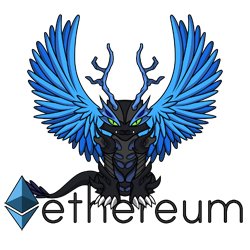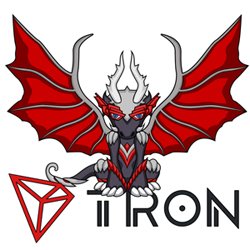Transaction fees: Ethereum, POA, TRON
With so many blockchains available today, with varying consensus it can get confusing. Users are interested in the same important question: How much will my transactions cost?

Why do we need transaction fees?
A decentralized blockchain consists of many independent nodes that all reach consensus via the blockchains protocol. Since the keyword here is independent, there needs to be an incentive for running a node. This incentive is usually a monetary incentive and partially provided by the transaction fees of the users. In other words: Transaction fees pay for infrastructure.
Another reason for transaction fees is to make sure that users don’t squander the networks resources. A decentralized network without fees would quickly be exploited. In other words: Transaction fees protect the network.
Now that we know that transaction fees are important let’s see what the following three networks with different consensus have to offer.
Ethereum
Ethereum is the original smart contract blockchain using Proof of Work (PoW) consensus. In PoW the important nodes are run by miners. There is no limit to the amount of miners that can join the network, and they are all competing against each other by solving mathematical problems. The fastest miner to solve each problem creates the next block and gets rewarded. To do so a miner needs special hardware and burns a lot of electricity. With incoming electricity bills and the constant need to upgrade hardware, the rewards must be significant to provide a financial incentive to miners.
On Ethereum the transaction is calculated by multiplying the Gas with the gas price.
Gas: This is the computing power and storage the network must provide to execute and save the transaction. For a simple financial transaction it is always the same but to interact with smart contracts or dApps it will vary. This is a little tricky as the amount of Gas that is needed is only calculated by the miner when the transaction is being executed. To know in advance how much gas is needed requires the user or the provider of the dApp to estimate or judge by past transactions of the same type.
Gas price: Gas price is the amount a user pays per unit of gas/computing power and is specified by the user who makes the transaction. It is paid in the native currency of the blockchain. The gas price is then used by the miners to rank transactions for inclusion in the blockchain. A higher gas price for the same type of transaction is more interesting for a miner than a lower gas price, so this may determine the speed of the transaction. The gas price constantly varies and if not chosen wisely can cause a transaction to get stuck for days.

In summary this system covers all requirements of a decentralized blockchain but it is also complicated for new users. Due to the PoW consensus the transactions are relatively expensive, especially in times of high network load.
POA Network
POA Network is a blockchain using Proof of Authority (PoA) consensus. Instead of an unlimited number of miners there is a predefined number of validators that execute the transactions and build the blocks. Each validator builds a block in turn, making the chain very light weight and cost efficient.
Transaction fees on POA Network are calculated by multiplying the Gas with a fixed price.
Gas: This is the computing power and storage the network must provide to execute and save the transaction. For a simple financial transaction it is always the same but to interact with smart contracts or dApps it will vary. This is a little tricky as the amount of Gas that is needed is only calculated by the validator when the transaction is being executed. To know in advance how much gas is needed requires the user or the provider of the dApp to estimate or judge by past transactions of the same type.

Overall this system covers all requirements of a decentralized blockchain and offers users a very easy interface. Due to the PoA consensus the transactions are very low cost and a more complex system for transaction fees is not necessary. It is not meant to cover the case of a high load as it aims for horizontal scalability.
TRON
TRON is a blockchain using Delegated Proof of Stake (DPoS) consensus. The transactions are executed and the blocks are built by a predefined number of Super Representatives (SR). Each SR builds a block in turn, making the chain light weight and cost efficient.
Transaction fees on TRON are a combination of Bandwidth and Energy, each multiplied with a fixed price.
Bandwidth: This is the storage the network must provide to execute and save the transaction. For a simple financial transaction it is always the same but to interact with smart contracts or dApps it will vary. It can easily be calculated before being executed simply by the amount of bytes a transaction has.
TRON provides a daily amount of free Bandwidth to each address that is sufficient for about 15 financial transactions.
Energy: This is the computing power the network must provide to execute the transaction. For a simple financial transaction it is always zero. Energy is needed to run smart contracts or dApps. As with Gas, the required amount of Energy varies for different transactions. This is a little tricky as the amount of Energy that is needed is only calculated by the SR when the transaction is being executed. To know in advance how much Energy is needed requires the user or the provider of the dApp to estimate or judge by past transactions of the same type.
Frozen assets: There is a third component to TRON transactions. A user can freeze any number of native currency to gain free daily Bandwidth or Energy. The more assets that are frozen, the higher the number of free transactions. Freezing assets will shorten the supply of the native currency, thus driving the prizes up and making the payouts for the SRs more lucrative. Both parties benefit.

At first glance this system may seem complex but it is a genius way of offering free transactions and protecting the system from exploitation. The transaction cost for Bandwidth and Energy, if not covered by the free daily limit, is lower than on Ethereum but higher than on POA Network to adequately reward the SRs that aim for vertical scalability.